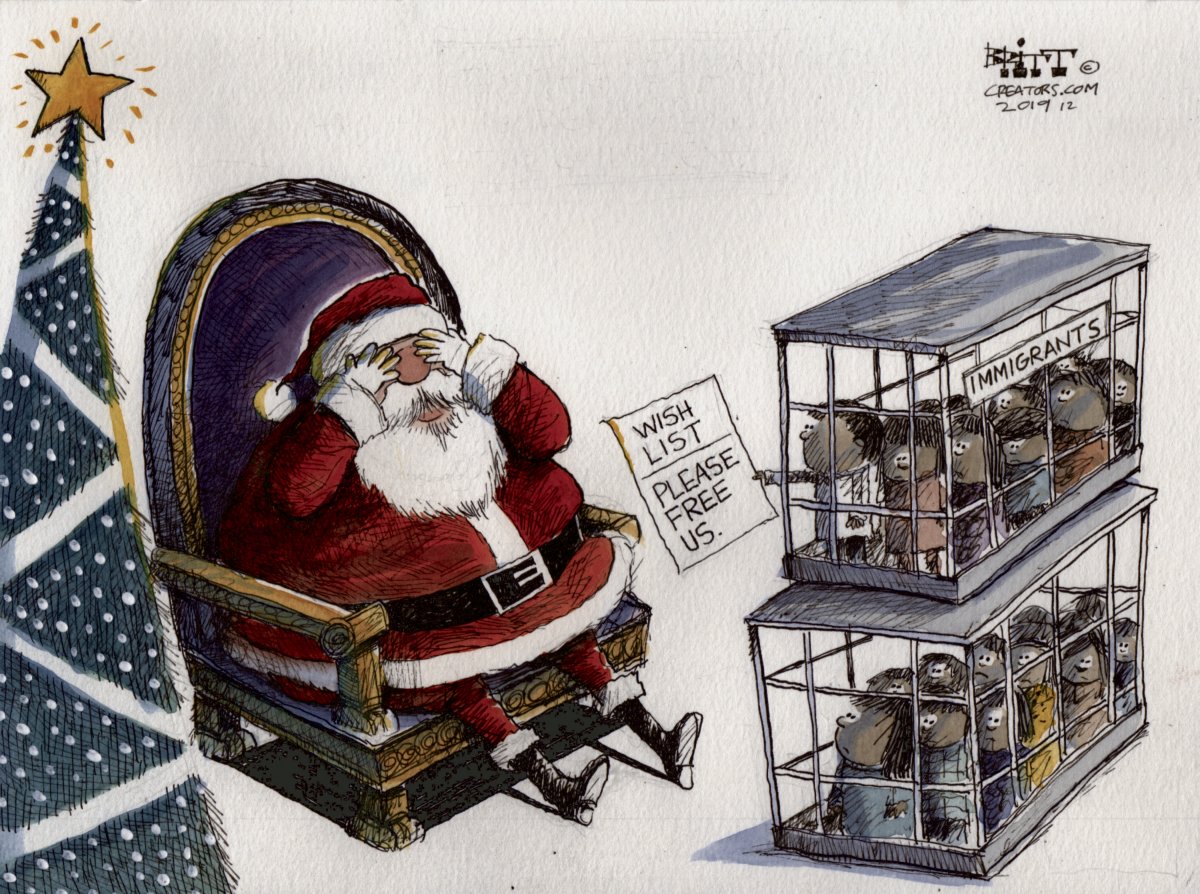Yes, here I go again, but two recent news stories have really gotten to me during this season of good will and sharing.
First, the New York Times reported this week that since last December, three migrant children have died from influenza in facilities along the border, where migrants routinely complain that cold temperatures sicken children, and where physicians have reported that crowded conditions spread illnesses.
CDC Recommends Flu Vaccines
The Centers for Disease Control and Prevention, concerned that infectious respiratory illnesses were spreading in congested border facilities, this year recommended flu vaccinations “at the earliest point of entry” for migrants who are 6 months or older.
But Customs and Border Protection officials have refused to put a vaccination program into effect, arguing that most migrants spend less than 72 hours in Border Patrol facilities. That doesn’t mean they are released, however. They are just moved to detention outside Border Patrol, in this administration’s $700-per-person-per-day private prisons.
Medical Professionals Showing Up With Vaccines
The controversy came to a flash point this week, according to NYT, when about 20 medical professionals hauling coolers with flu vaccines showed up at a migrant detention center near San Diego, announcing their plan to inoculate everyone inside the facility who consented.
When they were refused admissions, several lay down and staged a protest; six were arrested.
And on Top of That
And recently at least four people have been sent back to Mexico after being granted in the secret asylum hearings the administration is conducting (I thought we had a system of open courts, but guess that’s gone out of the window).
Francisco’s Case
On a November day, just south of the Texas border, according to Buzzfeed, Francisco left the temporary shelter he’d been stuck in for four months to travel to a nearby port of entry in the US.
Francisco was one of more than 50,000 asylum-seekers forced to wait in Mexico under a controversial program from the Trump administration. His case had been working its way through the immigration courts. But he and his attorneys were optimistic that his long journey from Cuba toward protection in the US was nearly over when his asylum claim was granted in one of those secret courts. Francisco had been able successfully to convince the courts his life would be in danger back in Cuba.
But What Happened Next
With his court order in hand, Francisco traveled four days later to the port of entry — the same place where he had first applied for asylum in July — with his attorney. He gave the 14-page document to a US Customs and Border Protection official and requested he be let in.
Instead, a border official took Francisco aside and gave him a notice for a hearing in January, according to one of his attorneys, Lisa Koop, associate director of legal services at the National Immigrant Justice Center. What’s more, Francisco would also have to wait in Mexico as Homeland Security officials used their allotted 30-day window to decide whether to appeal his case.

